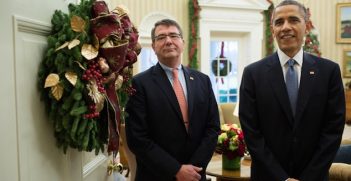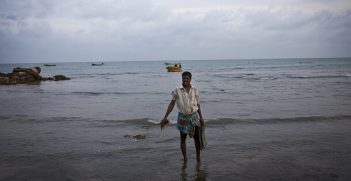Happy Birthday Sustainable Development Goals

One year ago, all UN member states signed on to the 2030 Agenda and the 17 Sustainable Development Goals. It was an unprecedented step toward creating a more inclusive and equitable society, underpinned by the principle that no one is to be left behind. Australia has made a number of commitments to this transformative agenda, but there is still much more that can be done.
Where did the Sustainable Development Goals come from?
The formulation and agreement of the Sustainable Development Goals (SDGs) was undoubtedly one of the largest and most successful multilateral negotiations in recent times. They incorporate and extend the progress that was made towards poverty alleviation through the Millennium Development Goals over the 15 years from 2000-2015. They also weave in the principles of sustainable development and the focus on finite resources and planetary health that emerged from the 1992 Rio Earth Summit and reaffirmed in the Rio+20 Summit of 2012.
What are the SDGs?
The SDGs outline the journey we all must take—developing and developed countries alike—if we are to realise a better future by 2030. The SDGs tell us a lot about what this future will look like—from eradication of extreme poverty, to resilient human settlements, from decent work and economic growth to sustainable use of ocean and marine resources, but most importantly they tell us who will benefit: everyone. That’s because the SDGs are underpinned by a principle that no one is to be left behind.
How exactly will we do that?
The SDGs speak to how we should go about achieving the complex, inter-related goals. Goal 17 outlines the means of implementation and speaks to cross-sector collaborations, policy coherence for development, addressing systemic barriers to poverty and inequality and mobilising the estimated US$260 billion (A$339 billion) needed to achieve the Goals. Without Goal 17, the SDGs are an aspiration with no pathway; the inclusion of Goal 17 means we know in which direction we should set our course.
Who has been doing what in the last year?
In the year since they were signed the SDGs have already gained high-level traction. In July this year, 22 countries presented their strategies for achieving the SDGs at the High-Level Political Forum on Sustainable Development and in all more than 50 governments are making the SDGs a central framework of their national development strategies. The UK has so far undertaken two parliamentary inquiries into the implementation and integration of the Goals overseas as well as within the UK.
What has been happening here in Australia?
Across the private sector, civil society, academia and the three levels of Government there is broad interest and support for the SDGs and a number of key initiatives have taken place in the last year:
- March 2016: the Australian Council for International Development (ACFID) released the report From Policy to Action, outlining immediate steps that could be taken to action the SDG agenda and calling for a coordinated approach across government to deliver domestic and international implementation.
- June 2016: the Research for Development Impact Network held a workshop for international development practitioners, researchers and representatives of government to explore the challenges of the SDGs and unpack the relevance of partnerships to deliver the vision.
- Coinciding with the High-Level Political Forum in July, the Sustainable Development Solutions Network released an SDG Index & Dashboards Global Report, providing a ‘scorecard’ of countries against achieving the Goals. Australia ranked equal 20th alongside Estonia, but behind countries like Canada, the UK, Japan and Singapore.
- September 2016: the inaugural SDGs Summit was held in Sydney. At this event, the momentum for cross-sectoral collaboration was highlighted by the launch of statements in support of the SDGs from civil society, business, academia and youth; also DFAT announced an Inter-Departmental Committee on the SDGs, co-chaired with the Department of Prime Minister and Cabinet.
What else should Australia be doing?
With a successful national summit on the SDGs just passed, we know that the foundations for cross-sector partnerships are in place and there is goodwill and momentum towards a collaborative approach to achieving the vision of the SDGs. Building from that foundation will require that:
- We think beyond the aid program and ensure policy coherence through embedding development considerations across domestic and international policies to implementing the SDGs in Australia and helping achieve them in developing countries.
- There be a renewed and strengthened political commitment to Australia’s international development efforts. The announcement from DFAT of an IDC is a welcome step in the right direction because to have any meaningful chance at achieving the SDGs, we need to ensure the political will is there to back-up policy for domestic and international implementation.
- We focus on mobilising the resources and capabilities necessary to deliver the outcomes of the SDGs. In line with the Addis Ababa Action Agenda commitments, the Australian Government must ramp up efforts to explore and support more innovative public and private finance models for sustainable development. We need to invest resources domestically and commit to lifting aid levels to 0.7 per cent of GNI by 2030.
And then what? What should we make of the SDGs for the next 15 years?
The SDGs are about tackling the complex interplay between economic development, social inclusion and environmental sustainability. The Goals speak about transformational change and they mean we cannot proceed with a business as usual mindset.
We should think of them as a mixture of a mirror, map and mechanism. They are in part a mirror in which we should see our national values and aspirations reflected. We were active in shaping them and in securing a focus on peace and justice, borne from our involvement with neighbours such as Timor-Leste, Bougainville and the Solomon Islands. We also were active in ensuring a strong commitment to women’s rights and in maintaining our assertion that women and girls are equal and must be treated as such.
They are part map because taken together, the Goals chart a course. Goal 17, in particular, gives us a powerful signpost about the direction our first steps and forward momentum should take us.
And they are part mechanism—they give us an organising frame and a rationale for action; we can use them to evaluate our priorities, judge our progress and be held to account by our peers.
The SDGs do not provide all the answers, but if we respond thoughtfully and with commitment to the questions they throw up, we cannot help but be transformed.
Joanna Pradela is the Head of Policy and Naomi Gilbert is the Policy and Advocacy Adviser at the Australian Council for International Development (ACFID).
This article is published under a Creative Commons Licence and may be republished with attribution.





